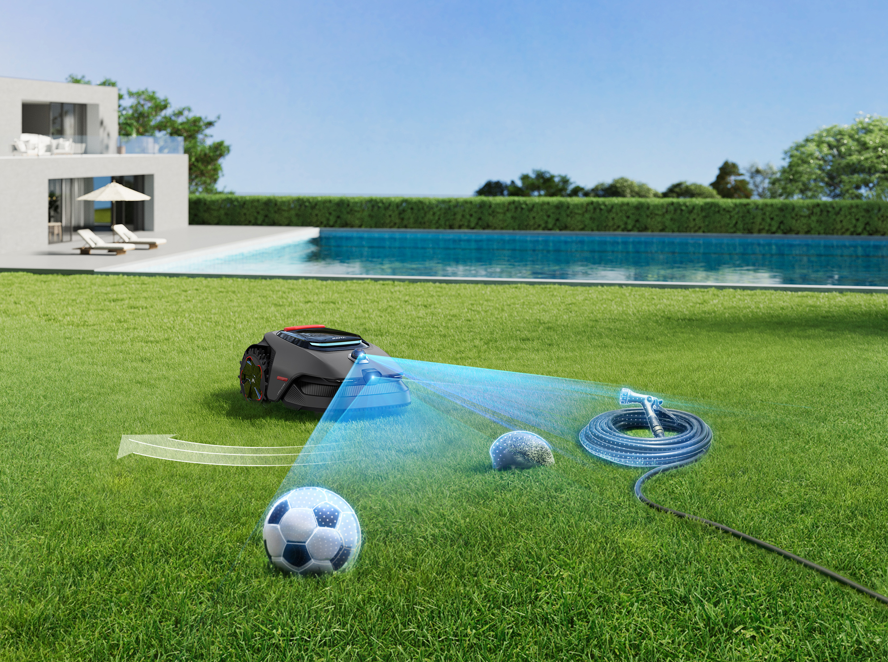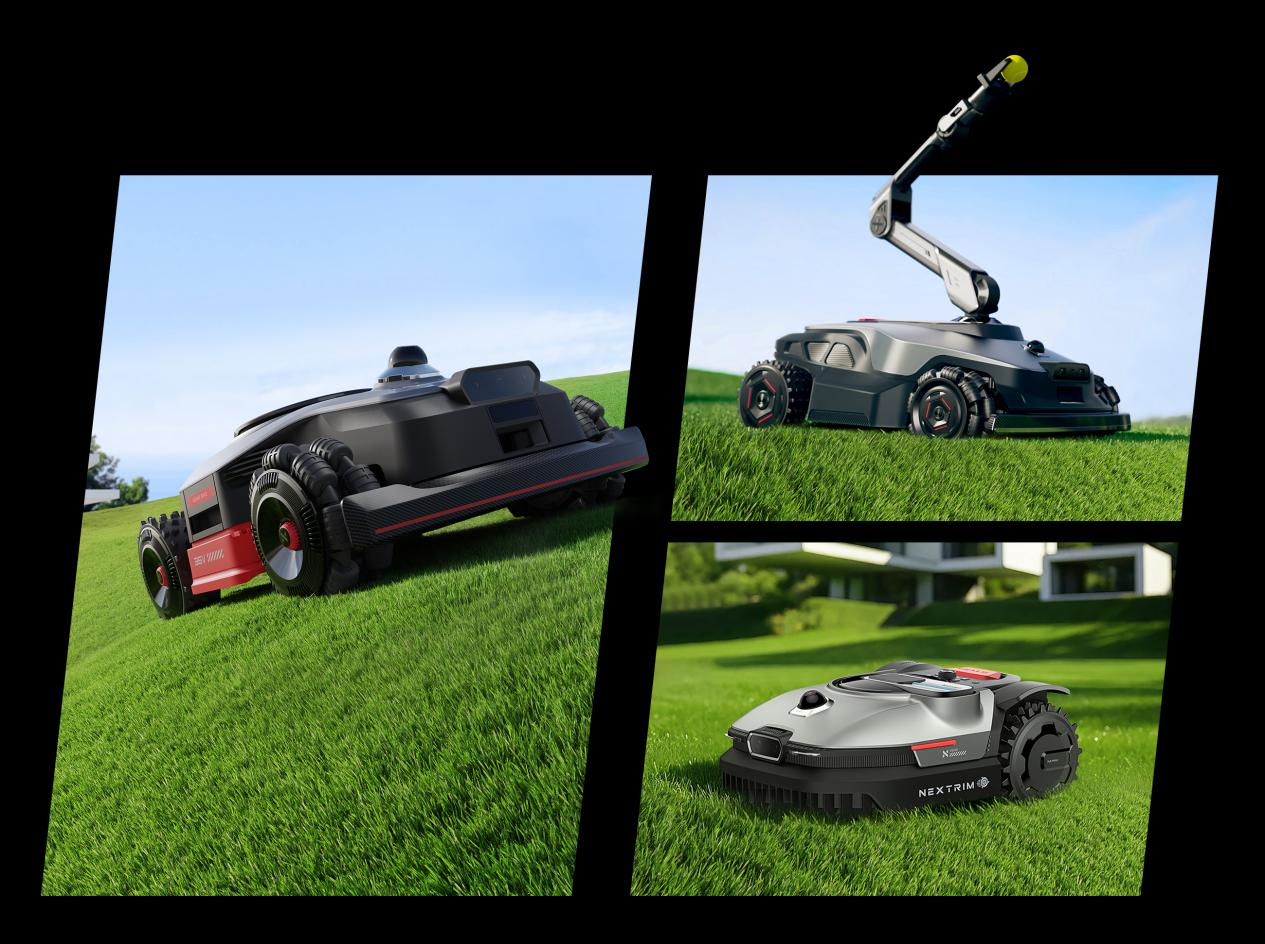
Image source: MOVA Official
AsianFin -- Chinese lawn-mowing robots are rapidly reshaping suburban landscapes across Europe and North America, riding a wave of surging exports, advanced technologies, and growing consumer demand for smart home and garden solutions.
According to Chinese customs data, exports of smart lawn mowers in the first quarter of 2025 jumped 58.9% year-on-year to $1.01 billion. Europe and North America together absorbed more than 93% of these shipments, highlighting how Western households and property managers have become the primary adopters of these devices.
Industry forecasts suggest that momentum will continue. Grand View Research projects the compound annual growth rate (CAGR) for robotic lawn mowers will range between 12% and 20% over the next five to ten years, with market penetration rising sharply from 0.1% in 2022 to 17%.
This rising tide has lifted several Chinese brands. Segway shipped over 140,000 units in 2024, while ECOVACS sold more than 80,000 units annually in Western markets. MOVA, a startup established only in 2024, surprised industry observers by surpassing 100,000 units sold in just six months—putting it on par with longer-established competitors.
The commercial rollout of boundary-free lawn-mowing robots began around 2021, fueled by breakthroughs in ultra-wideband (UWB), RTK positioning, and obstacle-avoidance technologies. Most manufacturers pursued RTK-based solutions, which use real-time data exchange between a fixed base station and the mower to correct errors in satellite signal transmission. This system enables precise navigation and avoids the “meter-level deviation” problems of traditional GPS.

But RTK comes with limitations. It requires a positioning pole to be set up on the lawn, which can be affected by cloud cover, nearby buildings, or tree cover—leading to inaccurate positioning or signal loss. “A large portion of RTK product returns stem from this issue,” explained Qin Ling, Chief Technology Officer of MOVA’s Lawn Mower Business. “Users without technical expertise often struggle to place the pole correctly, leading to poor performance.”
MOVA chose a different path, betting on 3D LiDAR technology to overcome these shortcomings. Partnering with Hesai Technology, MOVA developed a 16-beam solution that balances precision with cost efficiency. The result is a mower that can map a 1,000-square-meter lawn in just 3.5 minutes with centimeter-level accuracy, while offering true “out-of-the-box” functionality.
“LiDAR allows our mowers to function without complicated setup,” Qin said. “Users can unpack the machine and start mowing right away.” Thanks to 360-degree sensing, MOVA’s products can detect people, pets, toys, and other obstacles in real time, unaffected by lighting or weather conditions.
MOVA has continued to push boundaries with its LiDAR-based approach. Its first two products, the MOVA 600 and MOVA 1000, targeted small and medium-sized gardens in Germany, Switzerland, France, and Poland. In the second quarter of 2025, sales momentum accelerated, with monthly shipments in Germany exceeding 3,000 units and French Amazon sales surpassing 1,000 during promotional events.
At IFA 2025, MOVA unveiled two new models—the LiDAX Ultra AWD and LiDAX Ultra—designed for medium to large lawns. Both integrate the company’s new UltraView sensing system, which combines high-precision 3D LiDAR with an AI-enhanced 1080p HDR camera. The system enables omnidirectional awareness and long-range detection up to 70 meters, even at night or under complex lighting conditions.
“With vision integrated, the mower can autonomously recognize obstacles like hoses or children’s toys, while also doubling as a security device,” Qin noted. “Users can program patrol modes, allowing the mower to inspect the entire yard at regular intervals.”

Image source: MOVA official
Beyond navigation and obstacle avoidance, MOVA is experimenting with embodied intelligence—giving its machines the ability to interact physically with their environment. Its newly launched Master X yard care robot, under its NexLawn brand, is equipped with a retractable robotic arm that extends up to 77 centimeters. The arm can grip and move branches, toys, or stones, as well as handle more delicate tasks like weeding, watering, trimming branches, and even picking fruit.
“The application of embodied intelligence in lawn mowing robots is definitely a trend for future development,” Qin said. “Compared to humanoid robots, adding multifunctional capabilities to existing lawn mowers is both affordable and appealing to consumers.”
Looking ahead, industry growth shows no signs of slowing. Qin forecasts the lawn-mowing robot market will maintain a CAGR of 15% to 20% in the next three to five years, with Europe, North America, and Australia as the primary growth engines.
While household adoption dominates in Western markets, commercial demand in China is also poised to rise. With labor costs climbing and hardware prices falling, demand from golf courses, private estates, and luxury properties is expected to expand significantly.
“For MOVA, the goal is not only to grow its own brand but also to push the industry toward LiDAR-based solutions,” Qin said. “We hope to drive the supply chain to develop more efficient LiDAR sensors specifically for lawn mowers.”
As Chinese lawn-mowing robots continue to gain traction abroad, companies like MOVA are positioning themselves at the intersection of smart home technology, robotics, and AI. What began as a niche product for early adopters is now becoming a mainstream tool for homeowners—and perhaps soon, a multi-functional yard companion.
更多精彩内容,关注钛媒体微信号(ID:taimeiti),或者下载钛媒体App

